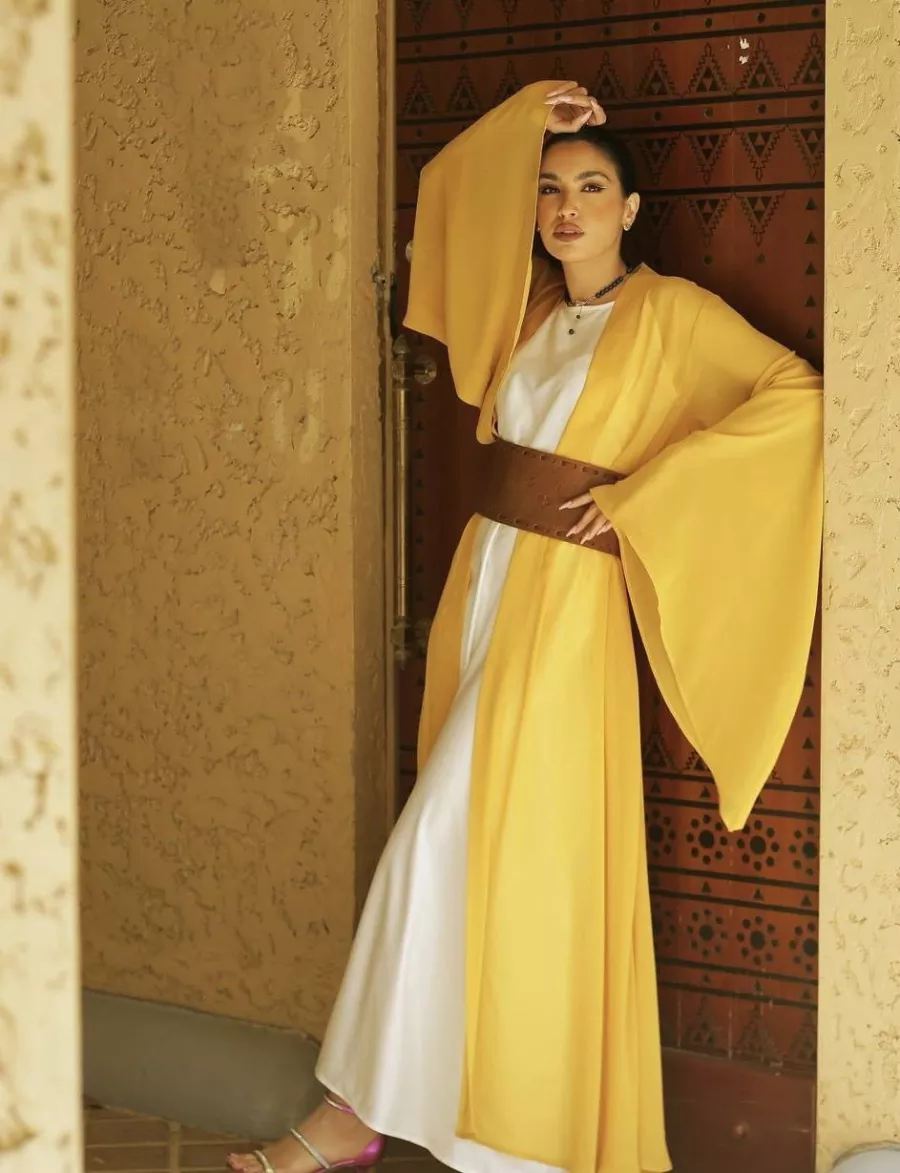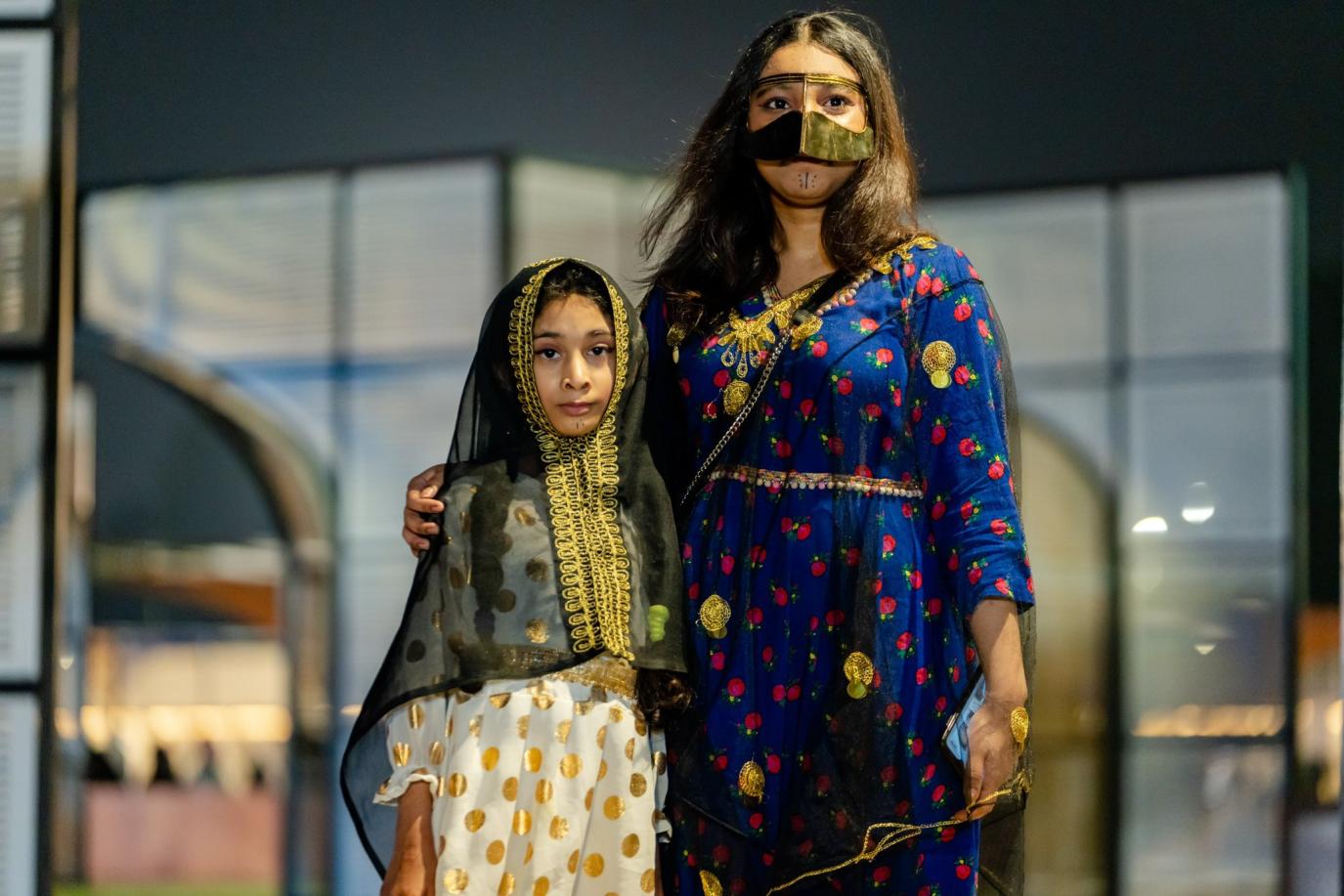The fashion industry in the Kingdom of Saudi Arabia is undergoing a significant transition. Fashion is now more than just a way to express one’s style; it is a whole industry that is expanding quickly to become a major force on the international scene and a key factor in achieving the objectives of the Kingdom’s Vision 2030.
Through innovation and design, the Kingdom is creating a new cultural and economic identity. The Saudi fashion industry seems likely to reach $42 billion by 2028, contribute significantly to the GDP, and employ more than half of women.
Record Figures & Worldwide Goals
Strategic efforts and an ambitious vision to develop this vital sector and turn it into a pillar of the national economy are driving the Saudi fashion industry’s confident journey towards international recognition. 
The Saudi Fashion Commission predicts significant growth in the industry, from $30 billion in 2023 to $42 billion in 2028, indicating the country’s rapid expansion. This growth has made the Kingdom one of the most lucrative and attractive markets in the fashion industry.
As an enabler and supporter of the local fashion community, the Fashion Commission is essential in controlling and guiding this development. The Commission’s efforts are concentrated on creating an engaging workplace that encompasses every phase of the value chain, from innovative design to production and development to the international marketing of Saudi talent and brands.
The “100 Saudi Brands” campaign is an iconic example of this trend, giving dozens of Saudi designers the chance to display their distinctive works in renowned international fashion hubs like Paris and Milan. The initiative received high praise from critics and onlookers, confirming the competitiveness of Saudi goods.
This boom’s effects extend beyond market value to include important economic and social indicators. In 2023, the fashion industry’s share of the Kingdom’s GDP climbed to 2.5% from 1.4% the year before, demonstrating the industry’s increasing significance as a source of national income.
In terms of creating opportunities, the industry added about 90,000 new jobs in 2023 compared to 2021–2022, a statistic that highlights the industry’s extraordinary vibrancy. Surprisingly, Saudi women are crucial to this sector, making up 52% of the fashion workforce overall, highlighting their leadership in this change.
Read more: Award for Startups in the Sustainable Fashion Industry
Fashion Weaves Vision 2030s Future
The Kingdom’s expanding fashion industry does more than just create jobs and make money. It has a strong and intimate connection to Saudi Vision 2030’s strategic goals. It is a useful instrument for attaining economic diversification. By encouraging and growing fashion-related enterprises, we can lessen our reliance on conventional resources and create new, creative, and innovative economic opportunities.
According to this strategy, the fashion industry plays an integral part in empowering Saudi women and advancing the vision’s goals to increase the contribution of women to development. In addition to providing economic opportunities, the industry also highlights the leadership potential of female designers and entrepreneurs and helps them participate more socially and culturally.
The industry also serves as a potent stimulant for creativity and innovation, which supports the Vision’s goals of creating a prosperous, knowledge-based economy. Whether it is by creating new designs that combine modern and traditional elements or by implementing sustainable production methods and contemporary technologies, the fashion industry helps to stimulate creativity in the Kingdom.
One cannot undervalue the fashion industry’s contribution to culture and tourism. Events, exhibits, and fashion shows support the objectives of growing cultural tourism by providing tourists from inside and outside the Kingdom with an attractive glimpse into facets of the vibrant Saudi cultural identity.
Simultaneously, Saudi fashion’s global visibility is increased through its openness to international markets and the sharing of knowledge with designers and fashion houses around the world. This illustrates the Kingdom’s strategic focus on strengthening its standing as a major regional and international hub in several industries, including the fashion and creative sectors.
Read more: Shahad Geoffrey, A Remarkably Talented Entrepreneur, Transformed Saudi Fashion
Female Talents Creating the New Saudi Elegance
A brilliant constellation of Saudi talent, especially women, lies behind the numbers and strategic plans. They are the real force behind this change in the fashion industry.
Ameera Al-Naseem, a renowned fashion designer, has successfully reached a large audience through digital channels, inspiring many with her unique style. The scene is also home to a new generation of imaginative designers who are distinctively contributing to Saudi fashion.
These designers include reputable individuals who have established a notable niche for themselves. For example, Kawthar Alhoraish, the creator of the “Kaf by Kaf” label, applies her architectural vision to the fabric industry by showcasing designs that blend daring engineering, narrative, and creative material experimentation, garnering her recognition and nominations for prestigious awards.
With her “Kallyah” label, Noura Al-Damer has brought about a qualitative shift in the world of high-end abayas and haute couture by providing graceful, flowing silhouettes with contemporary accents that capture the spirit of tradition. She is now able to take part in international fashion weeks like Milan thanks to this.
After developing her skills at international design centres, Samar Nasraldin, through her “Atulier” label, exemplifies a daring experimental approach, breaking conventional moulds and creating new shapes and materials that reflect a creative dialogue between heritage and modernity.
Notable for reinventing the abaya with a style that blends bold luxury and simplicity is Haifa Fahad.
Mashael Al Rajhi, who has represented the Kingdom in international forums, stands out for her conceptual designs that use monochromatic colours and distinctive materials. Additionally, noteworthy is Dana Bou Ahmed, whose brand “Dana” combines Eastern identity with global influence through elegant and useful designs.
A Tapestry of Diversity
With the smallest details, Mona Alshebil celebrates heritage while putting sustainability at the centre of her designs. In addition to highlighting the key part that Saudi women have played in this renaissance, this dynamic women’s movement also features other well-known figures like Tima Obaid, Sarah Al Tuwaim, Razan Al Azzouni, Arwa Al Banawi, Hanida Serfi, and others.
However, it also shows how local creativity can compete on a global scale and provide a rich diversity that suits a wide range of tastes. It accurately captures the development of the modern Saudi identity in the realm of elegance and fashion.

Read more: The Top 7 Saudi Fashion Brands: Modern Encounters Fusing Luxury and Genuineness